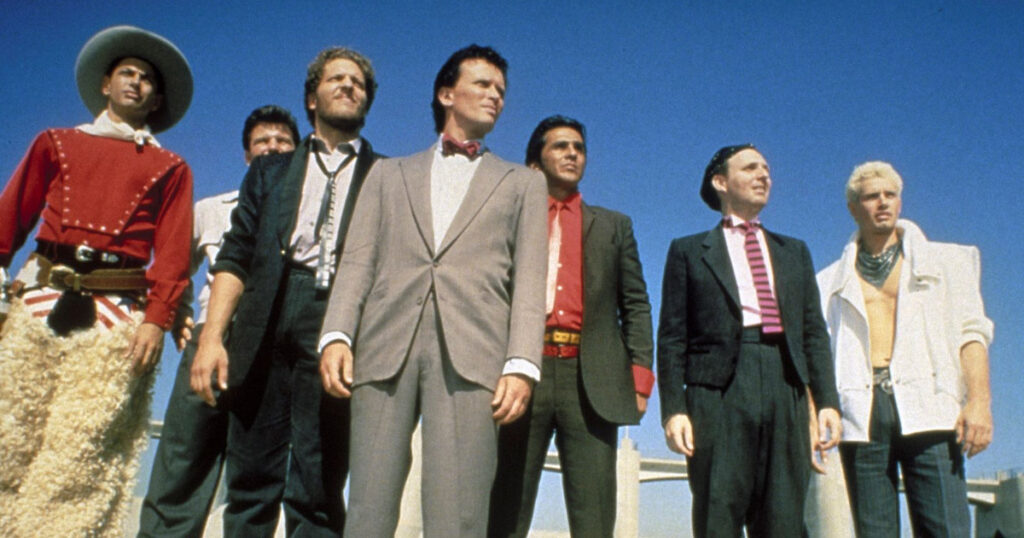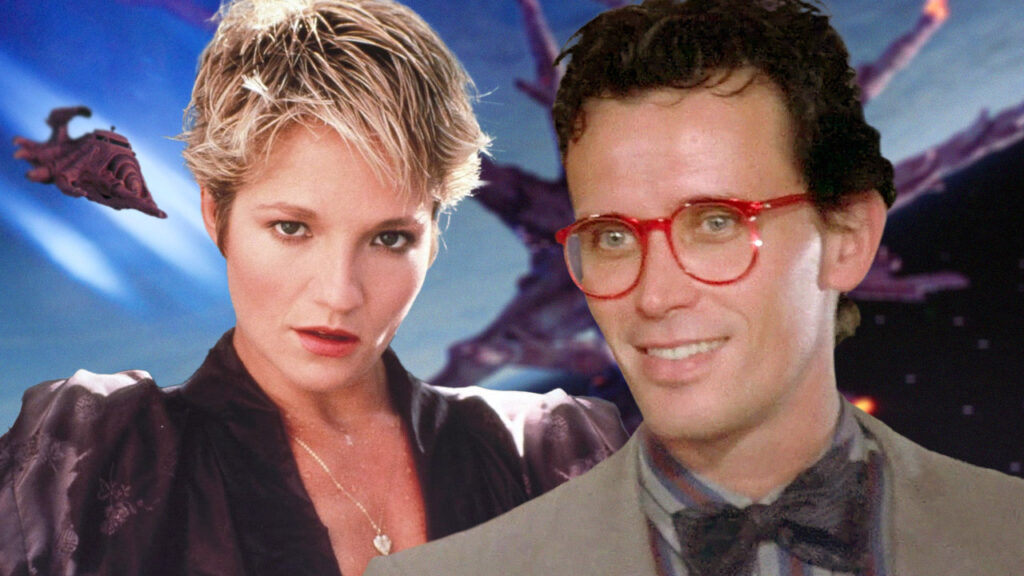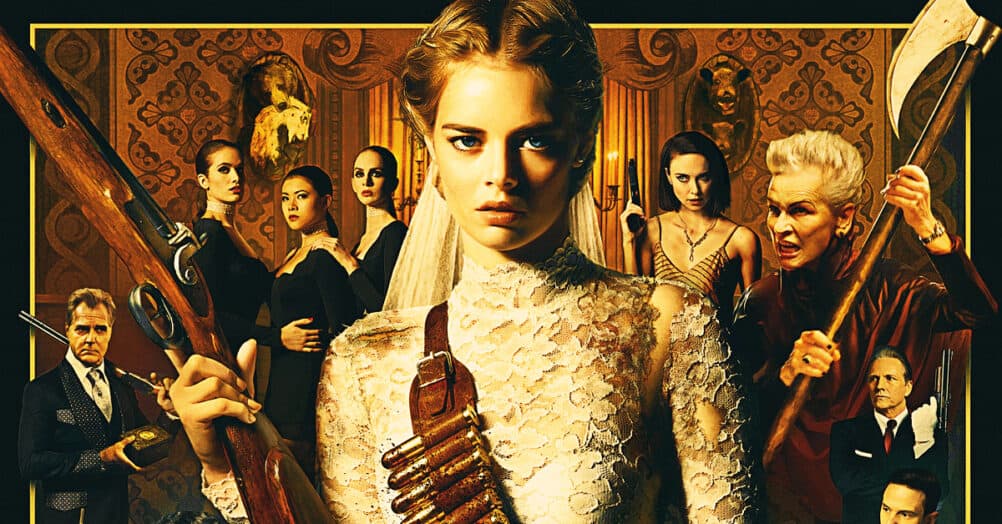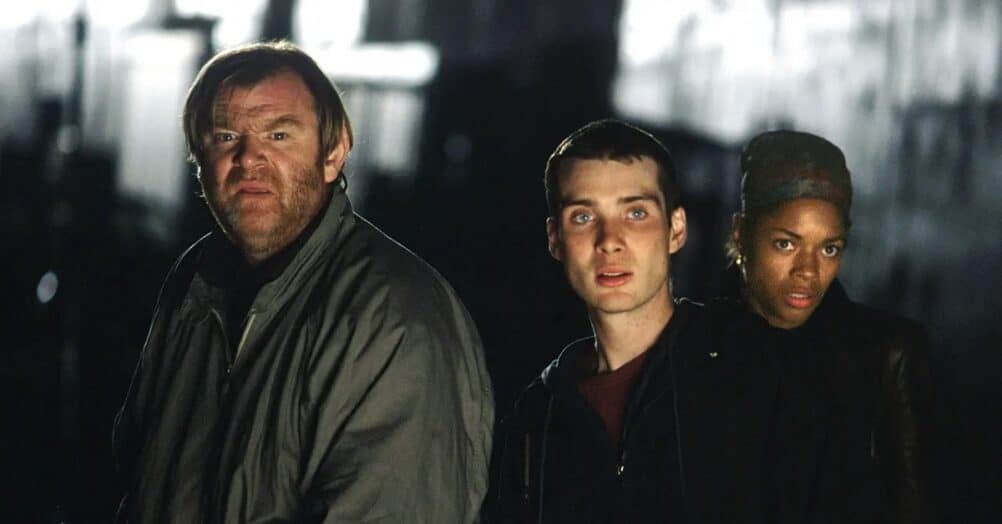Last Updated on July 30, 2024
Wherever you go, there you are. That iconic line has become a pop culture mainstay thanks to one of the strangest movies of the 80s, Buckaroo Banzai or, as it is formally titled, The Adventures of Buckaroo Banzai Across the 8th Dimension. This 1984 science fiction movie has been a cult classic for four decades and remains a fan favorite thanks to its virtually unexplainable plot. Part comedy, part action, part scifi, part martial arts, part musical, part western, part satire and part of a franchise that never came to be, Buckaroo Banzai may be the single most bizarre movie we have ever covered for this series.
A box office bomb when it was released, grossing only six million against a seventeen million dollar budget, Buckaroo Banzai holds a decent 68% rating on Rotten Tomatoes where critics sum it up succinctly as “violating every rule of storytelling and narrative structure in creating a self-contained world of its own” (Variety). Yeah, that pretty much sums up exactly why this movie has remained a personal favorite of mine for so very long. Buckaroo Banzai was released when Western pop culture was obsessed with Japanese and Chinese culture, releasing two years after Blade Runner and the same year as both The Karate Kid and Sixteen Candles. While the Asian influence is palpable, Buckaroo Banzai often feels like a teenager’s fever dream that throws everything but the kitchen sink into the crazy story. It’s legacy is so strong that everything from Star Trek and Men in Black to Fight Club and Back To The Future have featured influences from the movie. In fact, many Buckaroo Banzai fans have spotted direct connections to Robert Zemeckis’ Back to the Future, whose flux capacitor bears a similarity to this film’s oscillation overthruster. Wes Anderson’s The Life Aquatic also shares more than a few connections in regards to the offbeat tone and team dynamic in both movies.
In short, Buckaroo Banzai is a weirdly wonderful movie that not nearly enough people have watched. It feels like a comic book movie, but there was no comic book source material – although a comic book did come later. The origins of the film came in 1974 when director W.D. Richter was introduced to the writings of Earl Mac Rauch. Both alumni of Dartmouth College, Richter read Rauch’s novel Dirty Pictures From The Prom and the duo started writing letters to each other. After several years, Rauch met Richter in L.A. and began working as a screenwriter. When Rauch first explained his idea for a character named Buckaroo Bandy, Richter and his wife paid the writer $1500 to develop what he envisioned as inspired by “all those out-and-out, press-the-accelerator-to-the-floor, non-stop kung fu movies of the early ’70s”. Richter recalls that Rauch started multiple screenplays featuring Banzai and would abandon each one after only getting about thirty pages into it. Rauch himself remembered how easy it was to start a story and then forget about it. Over those early years, the writer compiled dozens of scripts that ended up that way including treatments with titles like Find the Jetcar, Said the President and The Strange Case of Mr. Cigars. Richter said it never made its way to a finished script as Rauch would continue writing and writing and writing.
The development of Buckaroo Banzai paused when Richter began working on the screenplay for Martin Scorsese’s film New York, New York amongst other unproduced scripts. It was finally in 1980 that Richter met with producers Frank Marshall and Neil Canton. Canton and Richter formed their own production company and planned to make Buckaroo Banzai their first film. This time, Rauch wrote a sixty page script called Lepers from Saturn which they shopped around but no studio was willing to take a risk on such a strange project from unproven filmmakers. The treatment eventually made it’s way to MGM/UA who signed Richter and Rauch to a deal within 24 hours. Over the next eighteen months, Saturn became Planet 10 and Lepers became Lectroids.

The project was jeopardized by the 1980 Writer’s Guild of America strike. MGM chief David Begelman left the studio and took Buckaroo Banzai to 20th Century Fox where they were greenlit with a $12 million budget. Three drafts later, the shooting script was ready and casting began.
While the studio wanted a recognizable face, Richter wanted an actor who “could both look heroic with grease all over his face, and project the kind of intelligence you would associate with a neurosurgeon and inventor”. Focused on stage actors, Richter stumbled upon Peter Weller. Weller was initially reluctant to take the role because of the uneven tone. Weller recalled in a classic Sci-Fi Universe Interview:
“Would it be campy? Would it be a cartoon? Or would it be the sort of wacky, realistic film that would catch people sideways—and not be a cartoon”
Weller based his character on Elia Kazan, Jacques Cousteau, Albert Einstein, Leonardo da Vinci, and Adam Ant. Seeing as his character is a physicist/neurosurgeon/test pilot/rock star (he’s the front man in a band called The Hong Kong Cavaliers), that seems to be the right mix of inspiration. For the villainous Dr. Emilio Lizardo, the studio wanted yet another unknown but Rauch always envisioned John Lithgow as Banzai’s nemesis Lord John Whorfin. Lithgow was also unsure of playing the role but said
“I have had roles where I came very close to going over the top. In Twilight Zone I almost went over the top several times. But this role is completely over the top. It makes the role in Twilight Zone seem like a model of restraint. I do it in a wild, red fright wig and rotten false teeth with a thick Italian accent. It’s wild.”
Lithgow copied an Italian accent from Roberto Terminelli, a tailor who worked at MGM. He also adopted a crab-like walk to imitate the alien nature of his character.

Banzai’s love interest, Penny Priddy, is played by Ellen Barkin. Christopher Lloyd was the one and only choice to portray John Bigboote while the rest of the cast was rounded out by Jeff Goldblum as New Jersey, Lewis Smith as Perfect Tommy, and Clancy Brown as Rawhide. Other notable supporting roles are played by the great Vincent Shiavelli, Dan Hedaya, comedian Yakov Smirnoff, Breaking Bad’s Jonathan Banks, and Carl Lumbly.
Production designer J Michael Riva worked with Richter for two years to develop the look of Buckaroo Banzai which resulted in a blend of 80s fashion with an off-kilter approach to the alien designs. The lizard like Lectroids were inspired by an anthropologist’s theory of what dinosaurs would have looked like had the evolved like humnans. The Red Lectroids clothing was inspired by Russian utilitarian clothing.
The spaceships differ from what audiences had come to expect from Star Wars and Star Trek and take on a much more organic appearance. This was also evident in the less polished look of the film which echoes the dystopian look of movies like Mad Max rather than the refined look of Star Trek.
Filmed in and around Los Angeles, Buckaroo Banzai was a challenge for the studio to release with copious scenes removed including an alternate opening featuring Jamie Lee Curtis as Buckaroo’s mother. Richter was constantly at odds with producer Bagelman whom he called an enemy of the entire movie. 20th Century Fox was equally concerned about the marketing of the film which they could not figure out. In a move that would echo the last decade or so of studios at San Diego Comic Con, Fox began marketing Buckaroo banzai directly at Star Trek conventions. They showed clips and gave out branded headbands which are now collector’s items. There was no traditional marketing push for the movie aside from some ads in Marvel Comics. Even John Lithgow has stated he struggled to explain the story to people despite loving how complex and weird it was.
When it hit theaters on August 15th, 1984, it was up against Star Trek III: The Search for Spock, Ghostbusters, and Indiana Jones and the Temple of Doom. With competition like that, it should be no surprise that Banzai grossed less than half of it’s budget. With critics citing it as unintelliglble, how did it go from bomb to cult classic?
Buckaroo Banzai is the closest thing Hollywood has produced to England’s Doctor Who. Like the long-running BBC series, Buckaroo Banzai is a amalgam of dozens of genre staples combined with a blend of tones and styles. There are no direct jokes in Buckaroo Banzai and yet it is incredibly funny. Peter Weller is so damn cool in the title role that it is amazing to see just how different he is here as compared to his later roles in Robocop and recently in Star Trek Into Darkness. Ellen Barkin was at the height of her sexiness with Penny Priddy ranking as a sci-fi sex symbol to rival Carrie Fisher in Return of the Jedi.
Like many cult classics from the 1980s, Buckaroo Banzai suffers from comparisons to Star Wars. Similar to George Lucas’ franchise, Buckaroo Banzai has deep roots in the serials of the 1940s and 1950s like Flash Gordon and Buck Rogers. But, rather than follow a straight forward genre formula, Banzai is absolutely a film about nerds and geeks made by nerds and geeks. The complicated jargon coupled with archaic special effects lends the film the feel of an independently produced feature rather than one coming from the same studio as The Empire Strikes Back.
There is not a lot of violence or sex in Buckaroo Banzai which lends the film a feeling of innocence that belies the fairly mature subject matter. This is a family friendly film that should appeal to kids and teens but with the pacing and tone of a more adult-centric story. Maybe it is that disconnect that prevented the film from finding a wider audience. But like those on the cutting edge of science or musicians invested in rock and roll, Buckaroo Banzai is indebted to everything that came before it even if it feels nothing else out there.
The Adventures of Buckaroo Banzai Across the Eighth Dimension is an unabashedly 1980s movie that looks dated four decades later. As we approach the movie’s ruby anniversary, there is finally a sequel in the form of a novel by Rauch titled Buckaroo Banzai Against the World Crime League (which you can get here). Will they revive it? Who knows? We live in a world where Night Court got a revival, so anything is possible. This is the perfect chance to revisit this classic movie and revisit some of the best costumes and quotes you never knew you were missing.

















Follow the JOBLO MOVIE NETWORK
Follow us on YOUTUBE
Follow ARROW IN THE HEAD
Follow AITH on YOUTUBE